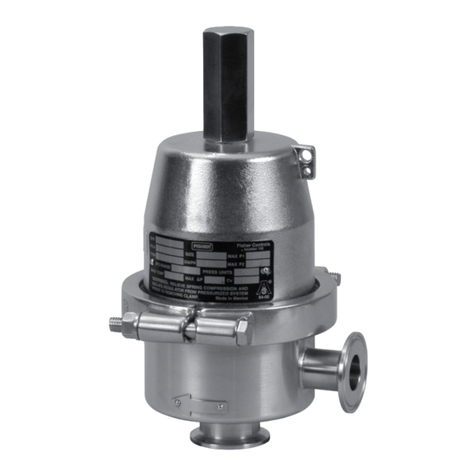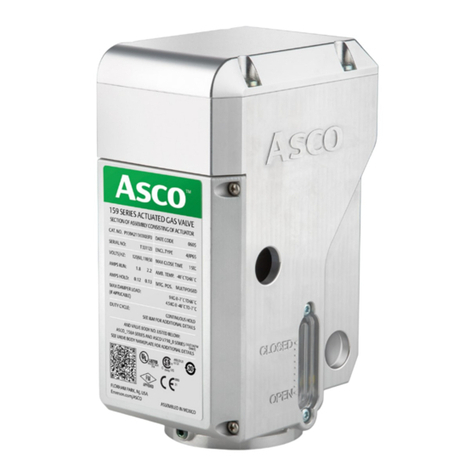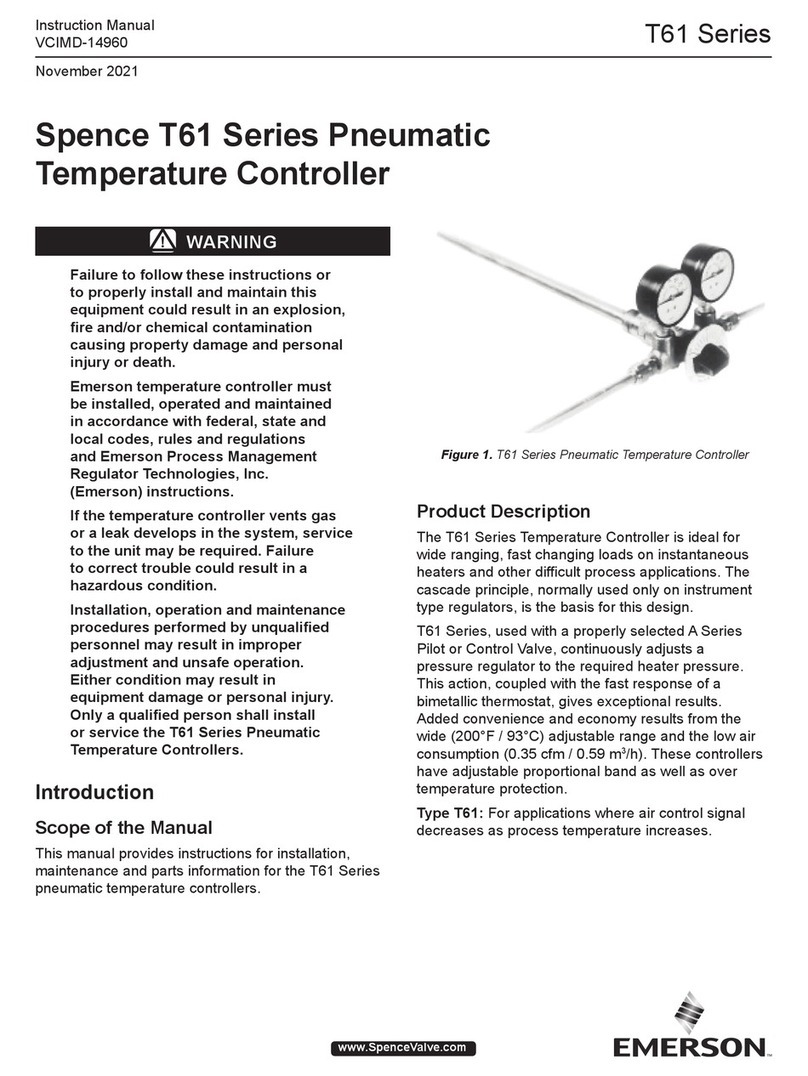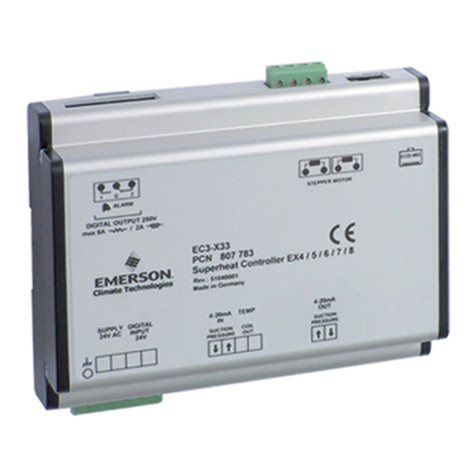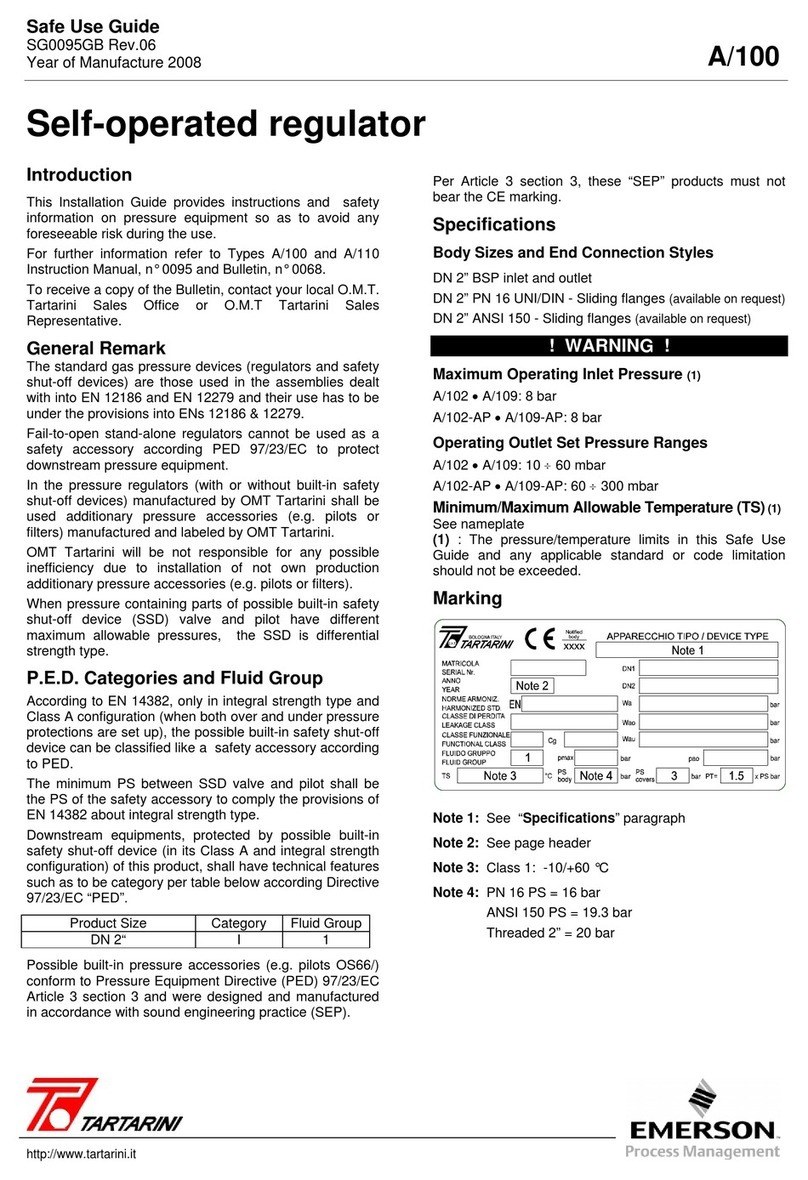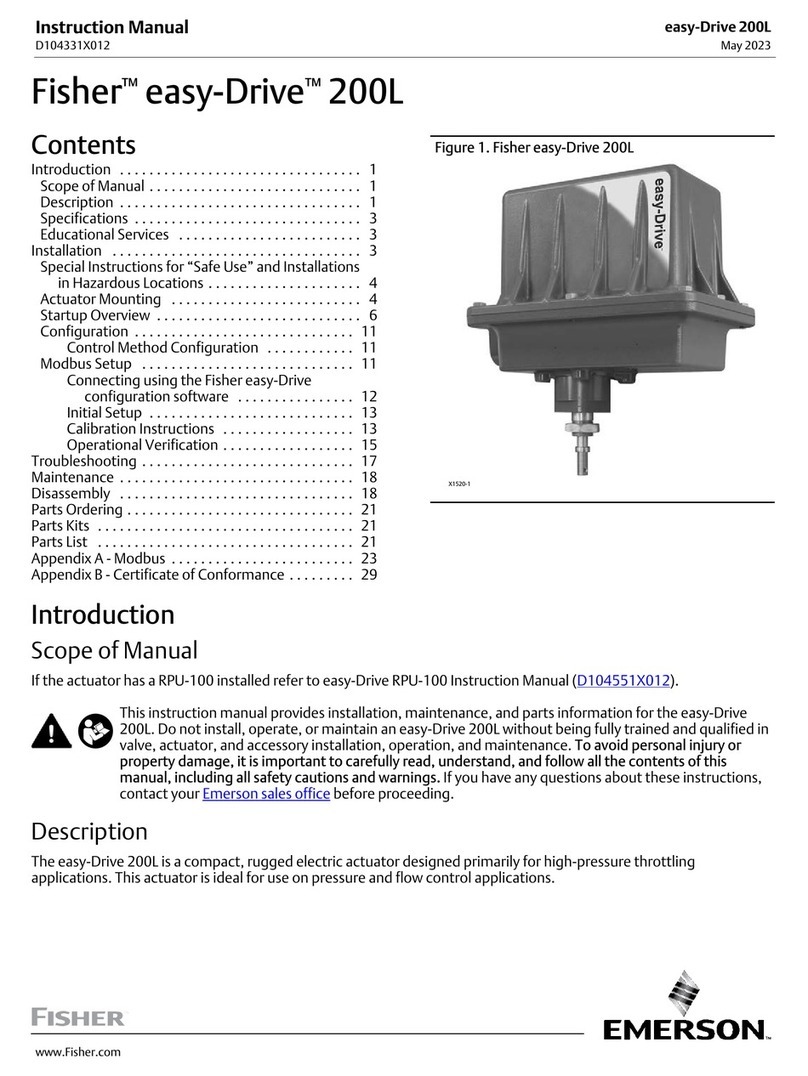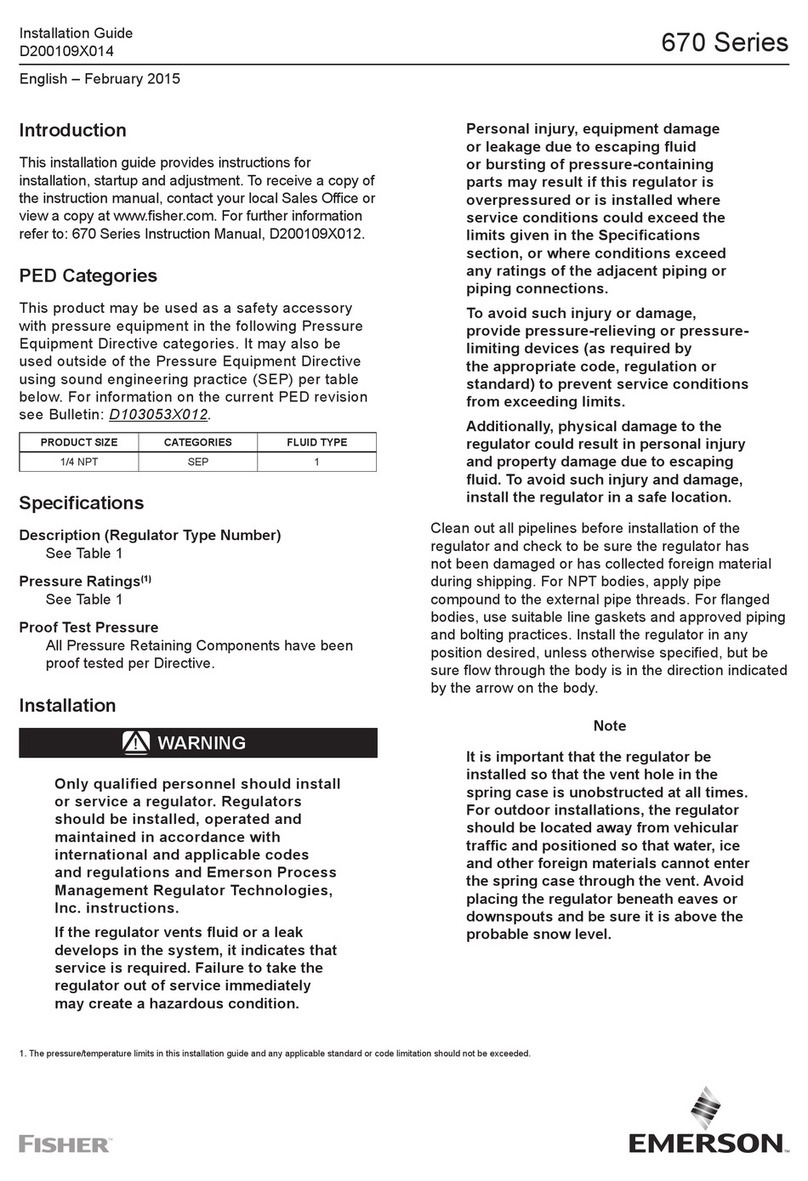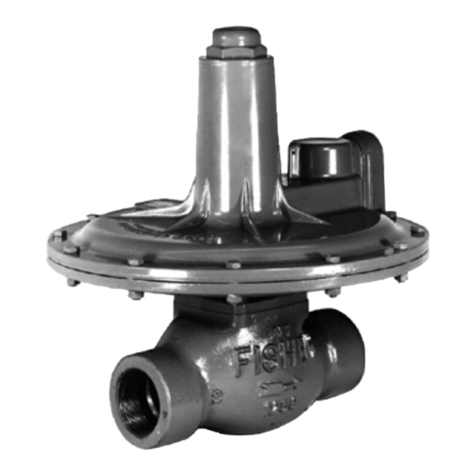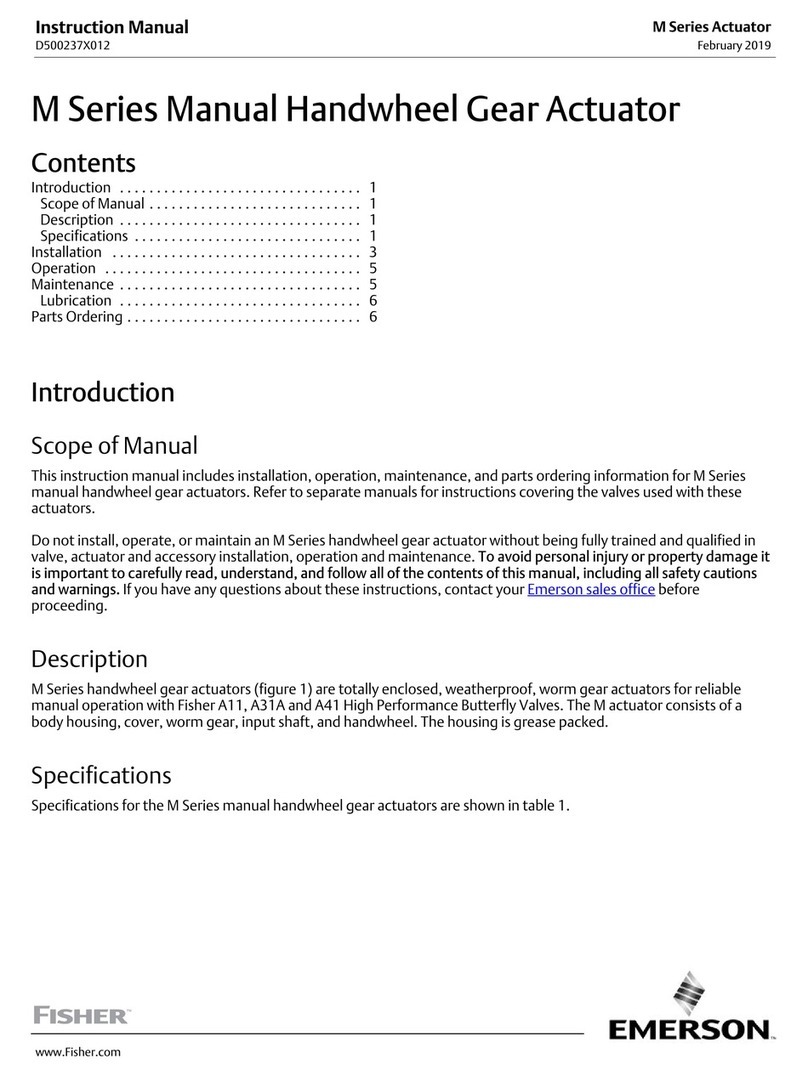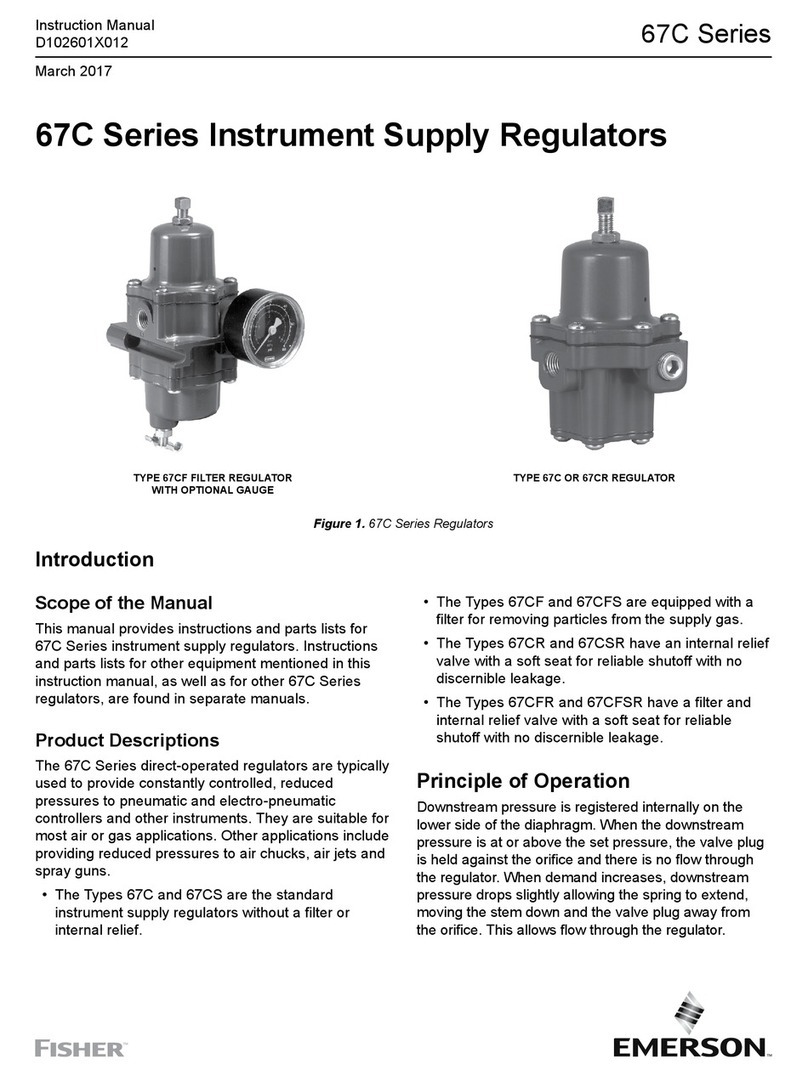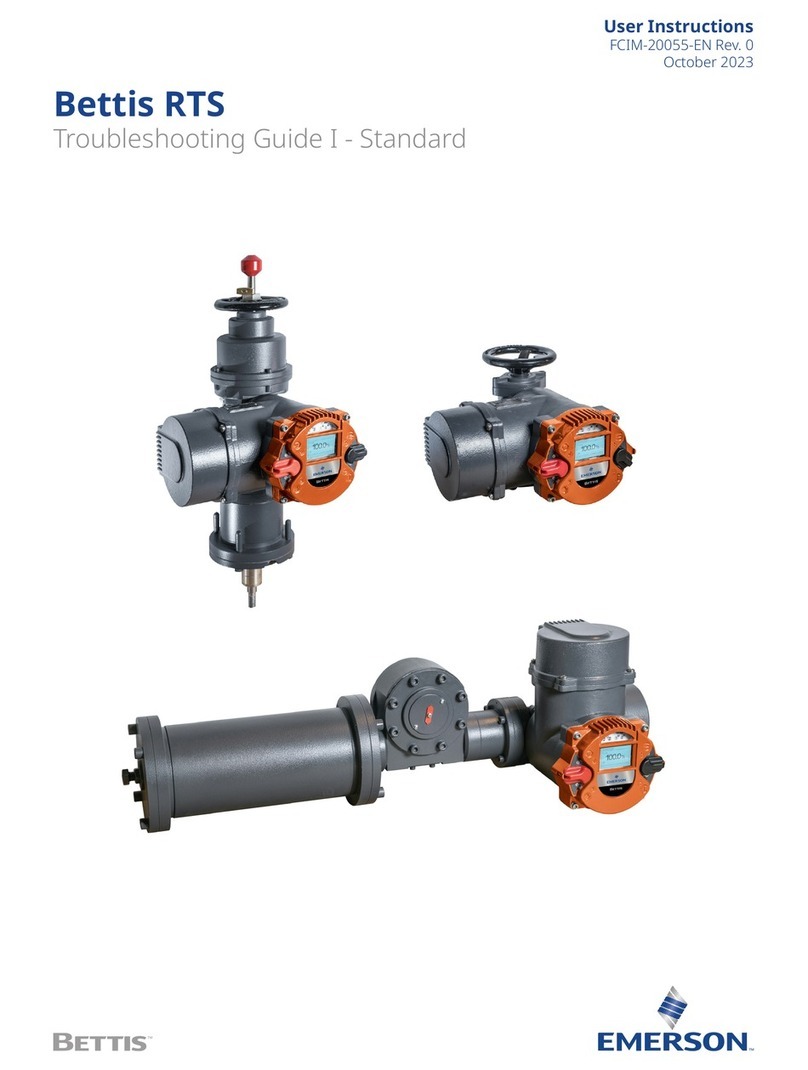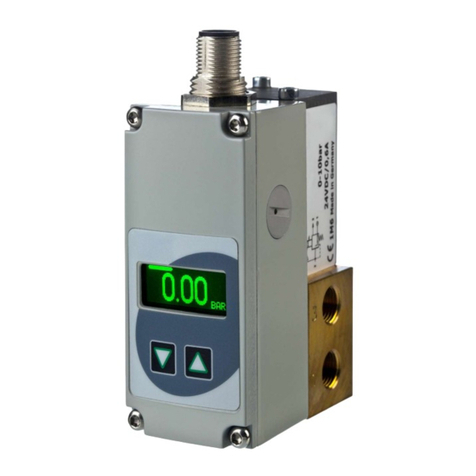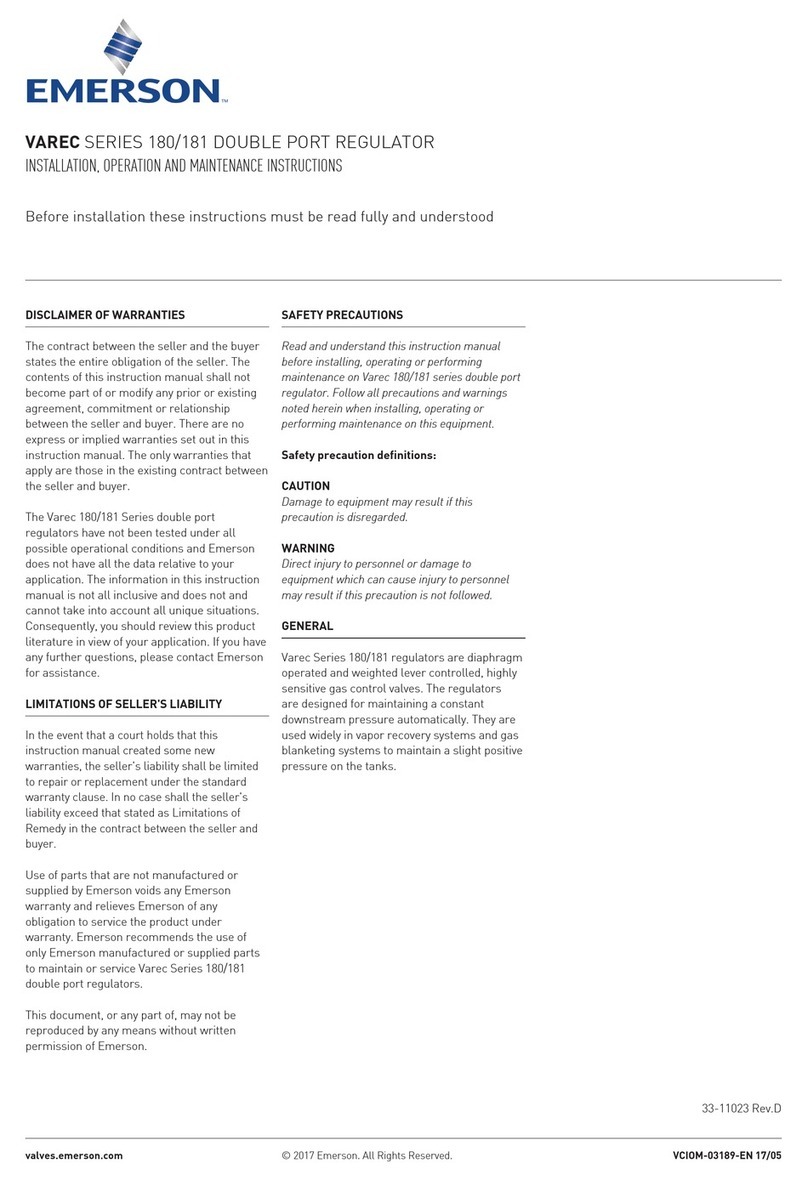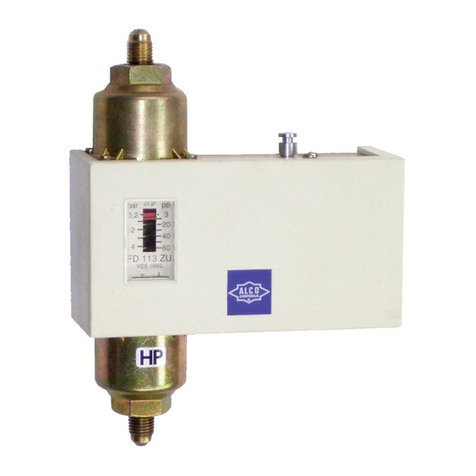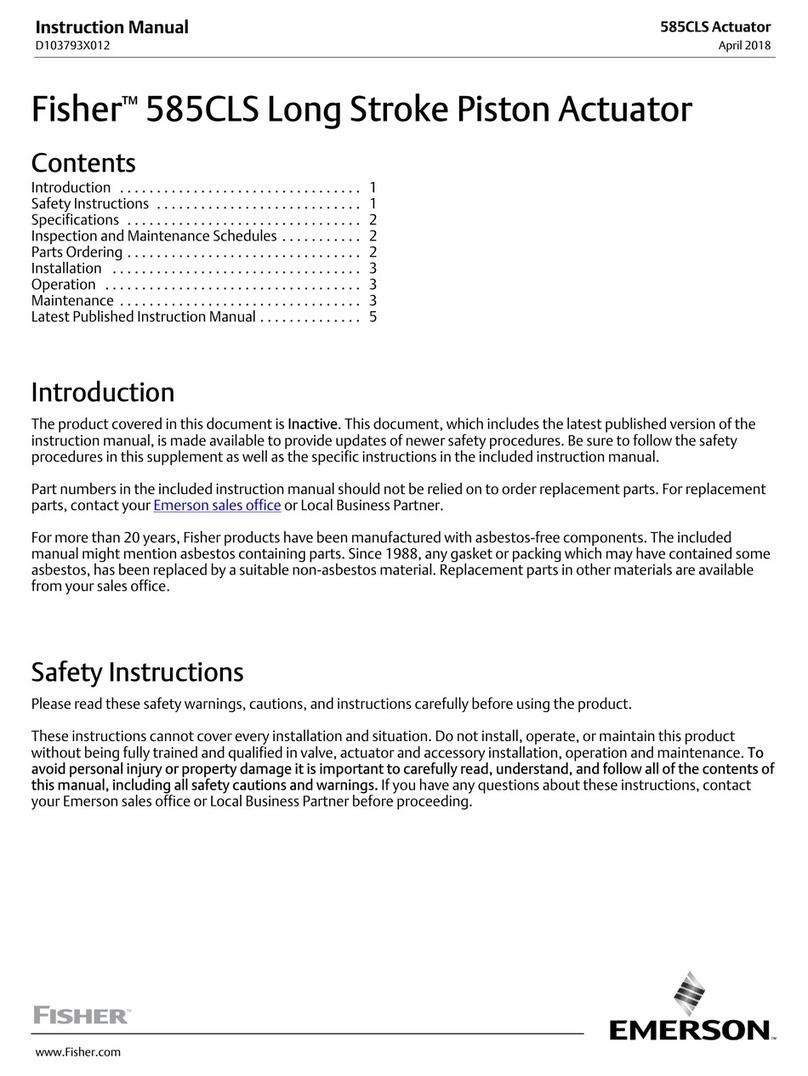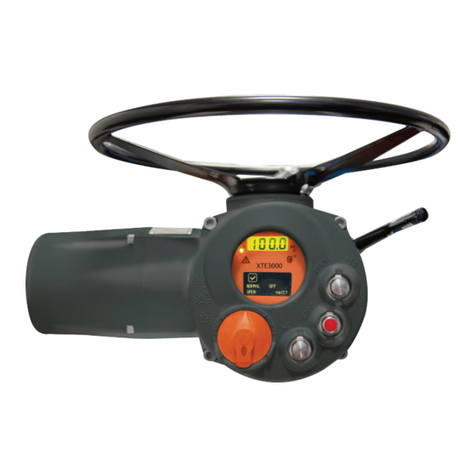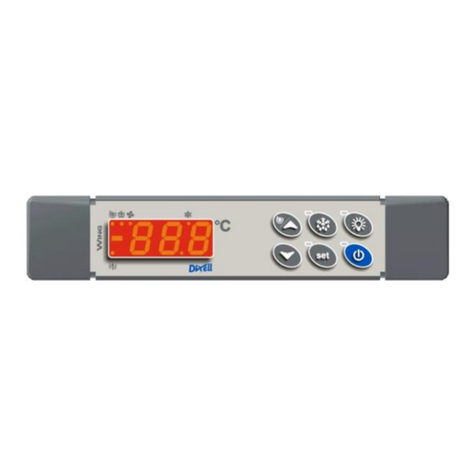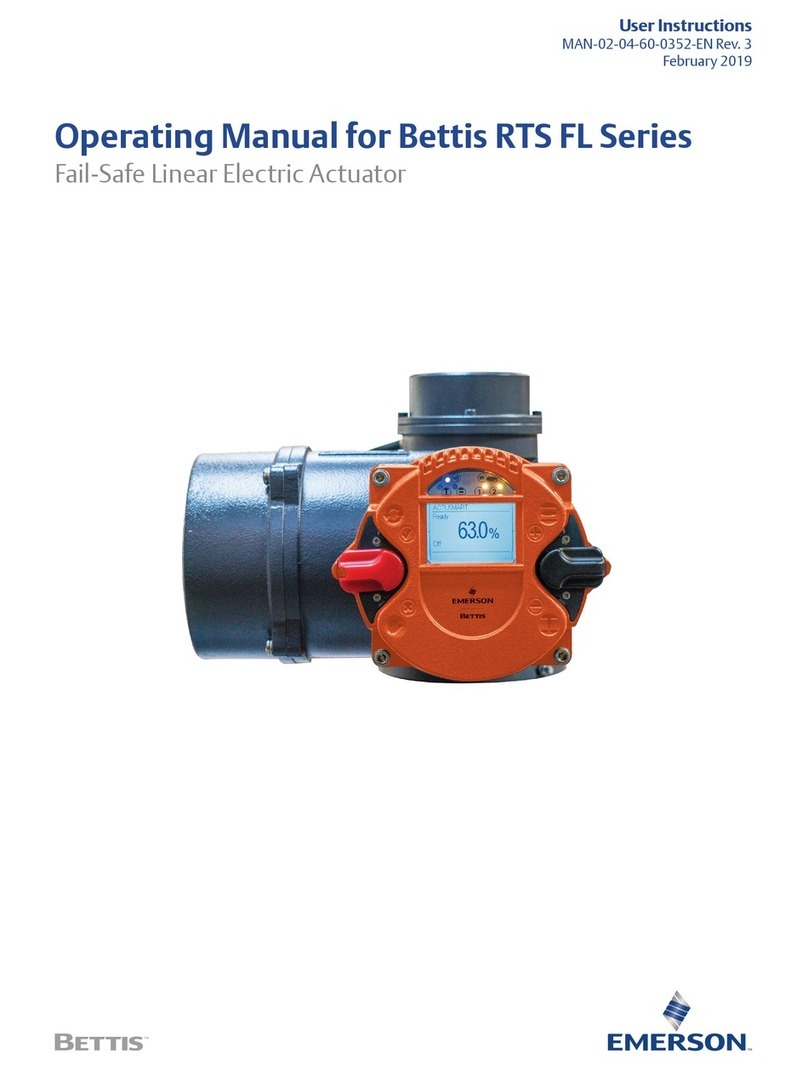Installation
Only qualied personnel should install or
service a regulator. Regulators should
be installed, operated, and maintained
in accordance with international and
applicable codes and regulations, and
Fisher instructions.
If the regulator vents uid or a leak
develops in the system, it indicates that
service is required. Failure to take the
regulator out of service immediately may
create a hazardous condition.
Personal injury, equipment damage, or
leakage due to escaping uid or bursting of
pressure-containing parts may result if this
regulator is overpressured or is installed
where service conditions could exceed the
limits given in the Specications section,
or where conditions exceed any ratings of
the adjacent piping or piping connections.
To avoid such injury or damage, provide
pressure-relieving or pressure-limiting
devices (as required by the appropriate
code, regulation, or standard) to prevent
service conditions from exceeding limits.
Additionally, physical damage to the
regulator could result in personal injury
and property damage due to escaping
uid. To avoid such injury and damage,
install the regulator in a safe location.
Clean out all pipelines before installation of the regulator
and check to be sure the regulator has not been damaged
or has collected foreign material during shipping. Use
suitable line gaskets and approved piping and bolting
practices. Install the regulator in any position desired.
However, to ensure self-draining (from outlet to inlet) the
regulator should be installed with the spring case in the
upright vertical position. The arrow on the body indicates
ow direction.
Note
It is important that the regulator be
installed so that the vent hole in the
spring case is unobstructed at all times.
Overpressure Protection
The recommended pressure limitations are stamped
on the regulator nameplate. Some type of overpressure
protection is needed if the actual inlet pressure
exceeds the maximum operating outlet pressure rating.
Overpressure protection should also be provided if the
regulator inlet pressure is greater than the safe working
pressure of the downstream equipment.
Regulator operation below the maximum pressure
limitations does not preclude the possibility of damage
from external sources or debris in the line. The
regulator should be inspected for damage after any
overpressure condition.
Startup
The regulator is factory set at approximately the
midpoint of the spring range or the pressure requested,
so an initial adjustment may be required to give the
desired results. Make sure the CIP/SIP Pin (key 30,
Figure 1) is not installed in the spring case. With
proper installation completed and relief valves properly
adjusted, slowly open the upstream and downstream
shutoff valves.
The CIP/SIP pin must be removed before
regulator is placed in operation. The
pin will inhibit the proper operation and
function of the regulator and result in
overpressure of the downstream system.
Adjustment
To change the outlet pressure, remove the closing cap
or loosen the locknut and turn the adjusting screw or
handwheel clockwise to increase outlet pressure or
counterclockwise to decrease pressure. Monitor the outlet
pressure with a test gauge during the adjustment. Replace
the closing cap or tighten the locknut to maintain the
desired setting.
Pressure Loaded Construction
The spring case can be pressure loaded to adjust outlet
pressure. An optional tapped spring case, guide ring seal
and sealing washer on the adjusting screw must be used
for these applications. The loading pressure is connected
to the 1/4-inch NPT connection in the spring case
allowing registration on the spring side of the diaphragm.
Adjusting loading pressure will proportionally change the
outlet pressure setting of the regulator. A small amount of
mechanical spring load, in addition to the pressure load, is
recommended. Regulator set pressure achieved from the
combination of spring load and pressure load should not
exceed the outlet pressure ranges listed on page 1.
Taking Out of Service (Shutdown)
To avoid personal injury resulting from
sudden release of pressure, isolate
the regulator from all pressure before
attempting disassembly. Relieve all spring
compression and isolate regulator from the
pressurized system prior to removing the
clamp (key 15, Figure 1).


